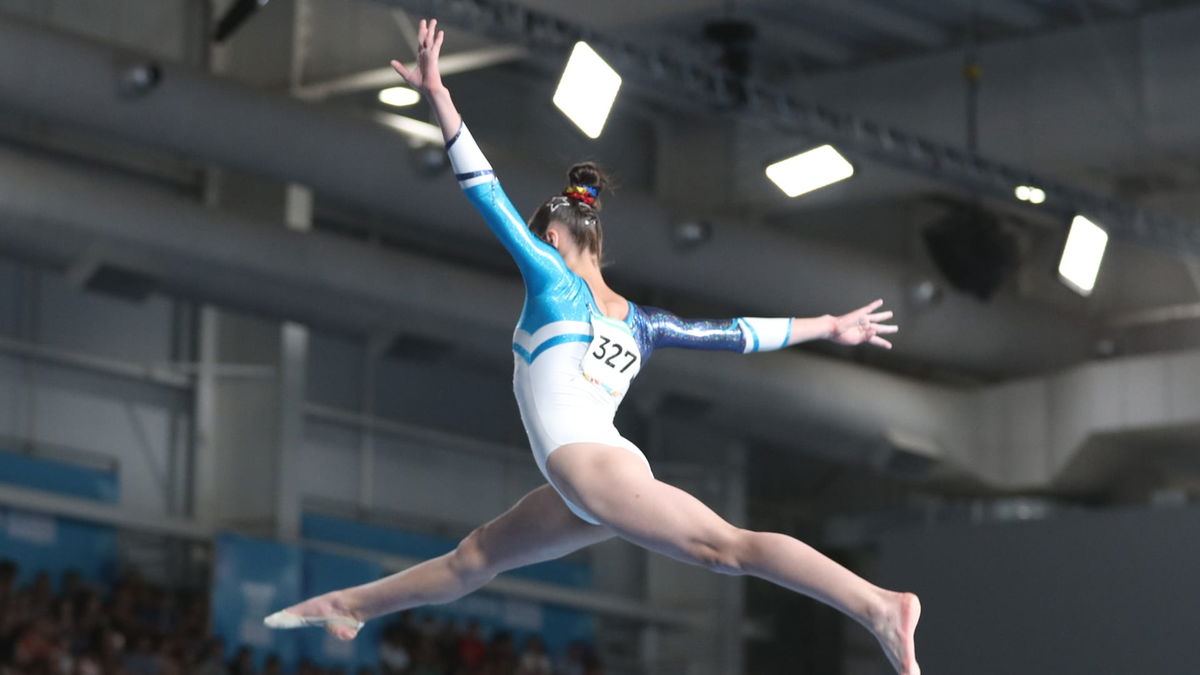

This year, October 9, came as a watershed moment in the history of the NCAA. On that day, the NCAA Division 1 council put red ink on a decades-old rule. With the immediate elimination, the rule National Letter of Intent (NLI) program is no longer on the active list in the rule book of the college recruiting program. The change had been on the cards for a long time, especially after the announcement of granting the former and current athletes roughly $2.8 billion to compensate for the damages because of the pre and post-NIL introduction issues. However, fans are still waiting to understand the new rules and their implications, though college gymnastics fans have started speculating
Watch What’s Trending Now!
As per the announcement, the 60-year-old NLI is now defunct. Previously, it served as a binding contract for student-athletes, requiring them to play for the institution they signed with for at least one year. In return, the institution provided compensation, usually in the form of an athletic scholarship. However, signing the NLI restricted the student-athlete from transferring to another school mid-year.
Due to this outdated rule, student-athletes were often unable to leave their institutions if issues arose during their time there, with irregular payout being one of the most common problems. Now, with the rule abolished, the binding contract is no longer in place. But does this ensure revenue-sharing for all student-athletes who faced issues in the past? And what will the new financial aid structure look like going forward?
ADVERTISEMENT
Thinking about these factors, one fan has chimed in on Reddit with the question, “I think the substantive stipulations of financial aid part of the agreement may be defined by NCAA rules (but maybe not how it is worded?) – but not the revenue-sharing part? This is all getting more and more confusing…” The gray part still reigns. However, several reports reveal that flexibility will come in the upcoming rules.

Reuters
Paris 2024 Olympics – Artistic Gymnastics – Women’s Podium Training – Bercy Arena, Paris, France – July 25, 2024. Yushan Ou of China during training. REUTERS/Mike Blake
According to NCAA athletics experts, the binding aspect will remain in place. However, with the new rules, both student-athletes and institutions will have more say in the agreements. The strict one-year commitment may no longer apply as it did before. In the past, the NLI often blocked student-athletes, even if they faced issues like missed payments or other irregularities. This time, the scenario may change, giving athletes more flexibility. Yet, the binding contract will still exist in some form.
ADVERTISEMENT
Under the new rules, colleges and universities will still have an advantage if a student signs a financial aid agreement. These rules will prevent other colleges from recruiting those students. There will still be restrictions on contacting students who have signed such agreements, though athletes may no longer be forced to stay for a full year despite challenges. However, there are still many uncertainties surrounding the announcement, and gymnastics fans have pointed out a few concerns.
ADVERTISEMENT
The gymnastics fans ask some relevant questions after the latest change
The NCAA athletics community is anticipating a major shift on December 4 this year, known as “Signing Day” in 2024. Normally, this day sees a flurry of student-athlete commitments, but with the recent abolishment of the NLI rules, that may not be the case. The new regulations could lead to more negotiation-driven discussions, potentially spreading commitments across multiple days instead of one. Fans speculate that this could result in school-specific agreements, creating several “Signing Days” instead of the usual single event.
Based on that, a gymnastic fan has penned, “Interesting. It looks like the move is meant to allow for individual school based agreements so they can create their own stipulations with NIL? I would think this will mostly affect gymnasts at schools with these large NIL collectives like LSU or Utah.” There’s some truth to this observation. In the past, gymnastics programs like LSU and Utah have landed big names, such as Olivia Dunne, who secured large NIL deals.
Top Stories
Travis Kelce Confirms Retirement Stance as Chris Jones Makes Bold Claim on Chiefs TE’s Future

Ex-Wife Elin Nordegren’s Reaction to Tiger Woods Dating Vanessa Trump Speaks Volumes

NFL Makes Final Punishment Decision on Shedeur Sanders Incident in Week 17

Brooks Koepka’s LIV Golf Exit Explained as Ex-Pro Reveals Brutal Reality

Falcons Owner Arthur Blank Makes Double Firing Decision as Locker Room Stands Against Raheem Morris’ Exit

Furious Lamar Jackson Confirms Stance on Ravens Future as John Harbaugh Blames Tyler Loop for Playoff Exit

With these new rules, on signing days, schools with strong NIL backing may have an advantage in negotiations, attracting more standout gymnasts and potentially boosting their rosters. This could mean extra opportunities and offers for budding gymnasts.
ADVERTISEMENT

ADVERTISEMENT
A gymnastics fan has pointed that out in the comment, “From my understanding it seems like the NCAA is leaving room for universities to create their own binding agreements. Could be very big for college gymnastics.” Thus, the NIL rules, as well, might see a few more names emerge big. But everything is still on the paper.
The intricacies regarding the rules are still at large. On that aspect, a fan has chimed in, “I am also confused by the bit about transfer athletes, too. I thought NLI was just for incoming freshmen.” However, in the rule book, the fresh regulations will come into effect after the student formally enters the portal. Still, is it enough to diminish every query? Probably not. Noticing that absence, a fan has quipped, “Just when I thought I finally understood NCAA gymnastics recruiting…”. Many questions remain unanswered, but more clarity should come in the days ahead. Until then, stay tuned for updates!
ADVERTISEMENT
ADVERTISEMENT
ADVERTISEMENT

